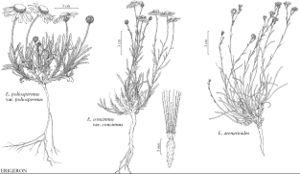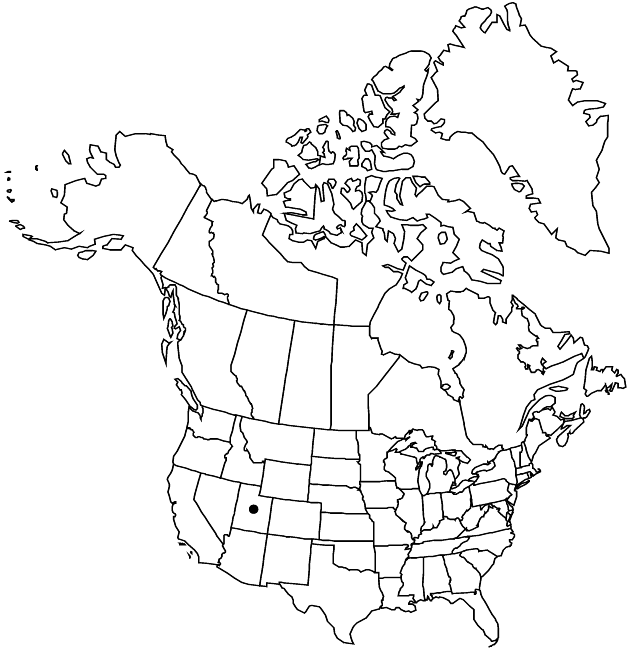Erigeron arenarioides
Fl. Rocky Mts., 1067. 1917.
Perennials, 6–25 (–30) cm; taprooted, caudex branches relatively thick, retaining old leaf-bases. Stems erect or ascending, wiry, glabrous, usually eglandular, sometimes minutely glandular distally. Leaves basal (usually persistent) and cauline; basal blades linear-oblanceolate to linear or filiform (usually folding), 15–60 (–80) × 0.5–2 (–5) mm, cauline gradually reduced distally, margins entire, sometimes sparsely ciliate (cilia ascending-appressed), faces abaxially glabrous, adaxially sparsely strigose, eglandular. Heads 1–3 (–9). Involucres 4–6 × 7–10 mm. Phyllaries in 2–3 series (often purple-tipped), glabrous, densely minutely glandular. Ray-florets 10–25; corollas blue, 4–8 mm, laminae not coiling or reflexing. Disc corollas 2.5–4.2 mm. Cypselae 1.5–2.2 mm, 2-nerved, faces sparsely strigose; pappi: outer of setae, inner of 10–16 bristles.
Phenology: Flowering Jun–Aug.
Habitat: Crevices in limestone and quartzite outcrops and cliffs, rarely in beach sand, oak-maple, mountain brush-white fir
Elevation: (1300–)1600–2900(–3600) m
Discussion
Selected References
None.

